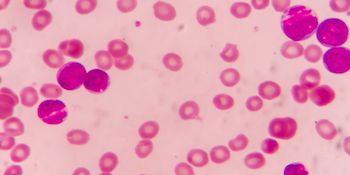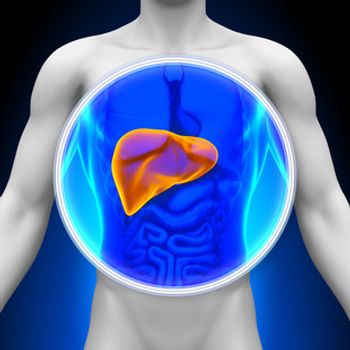
Women who are screened for cervical cancer are significantly less likely to develop rare types of the cancer, especially among women who had 2 tests.

Sarcoidosis has rarely been reported with polycythemia vera (PV), an acquired myeloproliferative neoplasm characterized by mutant Janus kinase 2 (JAK2) signaling leading to erythrocyte overproduction. In a recent article in the Journal of the American Academy of Dermatology, physicians report on the case of a female patient with PV and sarcoidosis.

Women who are screened for cervical cancer are significantly less likely to develop rare types of the cancer, especially among women who had 2 tests.

Oncologists and hematologists are welcoming a clarification from the CDC about the use of opioid pain relief for patients with cancer, past cancer, or sickle cell disease, and they are hopeful that payers see the update so that patients in pain are not denied or delayed relief.

"Watch and wait” is typically used first for asymptomatic patients with myelofibrosis, according to a retrospective review of management strategies from the United Kingdom.

The Patient Access Network (PAN) Foundation today opened a new patient assistance program for people living with Waldenstrom macroglobulinemia, a rare type of blood cancer that originates in the lymphatic system and is characterized by an excess of abnormal white blood cells and proteins called immunoglobulins.

Data from a phase 2 study demonstrated that high-grade neuroendocrine carcinoma had a 42% overall response rate to the combination of nivolumab and ipilimumab.

Researchers from South Korea said they have developed a next-generation sequencing (NGS) assay to detect somatic mutations, translocations, and germline mutations in a single assay for the purpose of supplementing or replacing conventional tests in patients with myeloid neoplasms.

Earlier this week, the FDA released a draft guidance document titled, "Rare Diseases: Natural History Studies for Drug Development” with the intention of informing both the design and implementation of natural history studies that can be used to support the development of safe and effective treatments for rare diseases.

A recent study found that patients with myeloproliferative neoplasms living in the United Kingdom, as well as their doctors, felt more burdened by the disease than other patients and providers in other parts of the world.

The findings show that patients with cutaneous T-cell lymphoma who had continuous systemic treatment had average monthly emergency department costs that were $100 lower than those with interrupted treatment.

In a recent survey-based study, researchers analyzed the relationship between symptom burden and incidence of medical disability leave (MDL) among patients with myeloproliferative neoplasms, including myelofibrosis, polycythemia vera, and essential thrombocythemia.

The fungal drug amphotericin, which was discovered in 1953, could possibly help patients with cystic fibrosis fight chronic bacterial lung infections if results from an early study are validated in humans, researchers said Wednesday.

A longitudinal 5-year observational study to examine functional and structural cerebral changes in adult-onset myotonic dystrophies found some differences between the 2 types of this incurable genetic disorder and said that additional brain studies are needed in light of upcoming treatment trials for this rare disease.

Earlier this week, the FDA granted priority review to a new drug application for fedratinib for the treatment of myelofibrosis. The drug had previously been awarded an orphan drug designation for the treatment of primary and secondary myelofibrosis.

The Committee for Medicinal Products for Human Use (CHMP) has adopted a positive opinion that an orphan drug, volanesorsen (Waylivra), receive a conditional marketing authorization. The drug would be the first medication approved for the treatment of the familial chylomicronemia syndrome (FCS).

Organizations and agencies marked Rare Disease Day this week. Here are 5 things to know about rare disease.

A case series discusses how a liver biopsy may prove instrumental in determining if ruxolitinib therapy should be discontinued or continued in patients with myelofibrosis (MF) and polycythemia vera (PV) experiencing liver damage.

The only curative treatment for myelofibrosis (MF) continues to be allogeneic hematopoietic stem cell transplant (HSCT). Occasionally, adverse events posttransplantation can occur and usually present within the first 2 years after posttransplant. Researchers recently sought to analyze the outcome of 2-year disease-free survivors in a systematic review published in Haematologica.

The PML Consortium formed among several pharmaceutical companies to prevent and treat a rare disease that emerged among patients taking immunomodulatory drugs. It could offer a model for finding solutions for adverse drug reactions.

On February 6, the FDA approved caplacizumab-yhdp (Cablivi), the first therapy specifically indicated for the treatment of acquired thrombotic thrombocytopenic purpura (aTTP) in adults. The drug is approved for use in combination with plasma exchange and immunosuppressive therapy.

Five-year results from the extended randomized MGTX trial demonstrated that the addition of thymectomy to prednisone leads to long-lasting lower quantitative myasthenia gravis (QMG) scores and prednisone dosing.

A recent study sought to develop a robust predictive model for patients whose disease will transform into acute myeloid leukemia, a complication that is associated with a poor prognosis.

According to a recent study, the out-of-pocket clinical costs and capitalized clinical costs per approved drug were both lower for orphan drugs compared with nonorphan drugs.

Reflecting on a year of breakthrough advancements in the treatment of rare, difficult to treat cancers, the American Society of Clinical Oncology (ASCO) has named “Progress in Treating Rare Cancers” as the Advance of the Year.

A recent study reports that monocytes from patients with myeloproliferative neoplasms (MPNs) have a defective negative regulation of Toll-like receptor (TLR) signaling that allows for the unrestrained production of tumor necrosis factor alpha after TLR activation. Additionally, the authors write that TLR signaling not only contributes to chronic inflammation in patients with MPN, but also may predispose individuals to acquire MPNs.

Patients with mitochondrial disease have a significantly higher cost burden compared with the general population, according to the results of a recent retrospective claims analysis.

259 Prospect Plains Rd, Bldg H
Cranbury, NJ 08512
© 2025 MJH Life Sciences®
All rights reserved.
